Results 1,221 to 1,230 of 12096
Thread: Anandtech News
-
11-23-11, 03:40 PM #1221
Anandtech: Batman: Arkham City—New Villain DX11 Man on PCs!
If you’re one of the gamers who waited anxiously for the PC release of Batman: Arkham City yesterday, and you have a reasonably high-end PC, there’s a good chance the initial experience caused some serious concerns. Originally launched last most for the PS3 and Xbox 360 consoles, PC gamers have waited for what they hoped would be the superior version, complete with DX11 support. The game released on Steam yesterday, and like many we were in line for the download. 16GB+ later, I fired up the game and decided to see what it could do—as a benchmark, of course.
Now, a bit of background information on my PC: I have a GTX 580, 12GB RAM, an overclocked i7-965X processor, and plenty of storage, all hooked up to a 30” LCD. Gaming in general isn’t a problem on this system, even at the native 2560x1600 resolution. The Elder Scrolls: Skyrim for instance launched a couple weeks back, and after poking around at the settings for a bit I settled for 2560x1600 and the “Ultra” defaults, and I still get >30FPS throughout the game, and typically >60FPS. Batman: Arkham Asylum was a great game, but it wasn’t particularly taxing on PC hardware, easily pulling 60+ FPS even on moderate systems. So, with that in mind I decided to go for the glory and set everything to maximum quality.
Upon launching the game and playing through the intro, it became readily apparent that the settings were too much. FRAPS was showing 60+ FPS in some areas, but with frequent dips into the single digits, and averages of around 30FPS. Ouch! I decided to dial it down a notch, since 1.5GB of video memory might not be enough for 4xAA and 2560x1600, right? Off went AA, with almost no difference in performance. Hmmm. Then I dropped to 1920x1200, still with very little difference in performance: single digit minimums remained in the built-in benchmark, with averages around 35 FPS. I tried disabling PhysX, which helped a bit, but the choppy performance remained. Then I tried turning off DX11 Tessellation (nope, it didn’t help), Ambient Occlusion (again, nope), and eventually I disabled the DX11 features entirely. Bingo!
Without DX11 features enabled, my setup is able to max out all the remaining settings (including PhysX) and still pull >60FPS in most areas, with dips to around 30FPS in scenes with a ton of PhysX eye candy (e.g. the pellets from the ice gun in the built-in benchmark). Turn off PhysX and minimum frame rates are above 50FPS with averages above 85FPS. So at least on NVIDIA, there’s a serious problem with DX11 right now, but what about AMD hardware? Additional testing confirmed that the extreme choppiness with DX11 features enabled extends to AMD hardware as well; on an HD 6950 DX11 mode got 22FPS average (and 0FPS minimum) while disabling DX11 bumped it up to 70FPS. The problem is also confirmed by this Batman forum post (for those who likely missed it).
So for now, disable DX11 support for the game and you’ll be fine as far as performance goes, but there’s a bigger question: why did this happen? I don’t think it requires a mathematics degree to put things together:
Thanksgiving Break + Black Friday + New Release = Profit!There’s no way this didn’t get caught in validation testing, particularly since DX11 support was one of the new features added for the PC version of the game. Sadly, not only do we get second-hand treatment but we also get broken enhancements. We’ve heard a fix is in the works and should come within the next week or so, at which point we can add Batman: Arkham City to our revised benchmark list and move forward. Still, after the delayed DX11 support for Crysis 2 this sort of thing doesn’t leave me with a warm fuzzy feeling. On the bright side, if you liked the last Batman game, Arkham City picks up pretty close to where things ended and is so far looking to be another intense and entertaining outing for the Dark Knight.
PS: As if the above doesn’t already show the PC version was shoved out the door, Steam Cloud, Games for Windows Live, and/or Batman apparently overwrote my save game when I ran it on a second PC, wiping out my progress. Probably some combination of the three, but regardless I’m a bit ticked that several hours of playing just went poof. Consider yourself warned.
More...
-
11-23-11, 05:40 PM #1222
Anandtech: Zotac Introduces Passively Cooled GTS 450 Zone Edition
Passively cooled high performance GPUs are quite popular with the HTPC community. NVIDIA GPUs are preferred by many HTPC users because of good software support (LAV CUVID, for example) and the ability to use custom renderers like madVR without losing out on hardware decode acceleration. I have already covered this in detail in a previous piece.
A look at the list of passively cooled GPUs on Newegg reveals that higher end NVIDIA GPUs are not represented well. In fact, we have a number of GT 430 and GT 520 passive models, but only one GT 440 model. On the other hand, AMD's GPUs seem to be quite popular in this space. We have a large number of 6450s. There are two models each of the 6570 and 6670. The 6750, 6770 and even the 6850 have one passively cooled model each.
Zotac is trying to level the playing field here with the introduction of a passively cooled GTS 450.
The GTS 450 Zone Edition comes with a GTS 450 GPU (192 shaders) underclocked to 600 MHz / 1200 MHz. The 128-bit 1 GB DDR3 memory runs at 1333 MHz The GTS 450 Zone Edition will have a MSRP of 99 Euros in the EU (with the pricing in the NA market yet to be determined). The unit is currently shipping to retailers and is expected to be out on sale in time for the Christmas shopping season.
Gallery: Zotac GTS 450 Zone Edition





Given that even the NVIDIA GT 5xx models seem to be looking a bit dated right now, we asked Zotac as to why this cooling mechanism wasn't put on one of the more recent NVIDIA GPUs. It appears that the thermal limitations of passive cooling required underclocking which NVIDIA wouldn't allow on the 500 series. We are sure this will turn out to be better than the GT 430 models we have been recommending for HTPC use so far (particularly if you want to use madVR with 1080i60 streams). Will the lower speed DDR3 memory and core clock speeds hurt it when compared to the passively cooled GT440 (for HTPC purposes) ? We will know as soon as the card hits the market.
More...
-
11-23-11, 11:11 PM #1223
Anandtech: Puget Systems Deluge: Revisiting the Art of Custom With X79
It's been a little while since we've had a Puget Systems desktop in, and so far we haven't yet tested any of their big dog gaming machines. Everything else we've tested, we've liked, but what happens when the fine folks over at Puget Systems pull out all the stops and put together a high end gaming machine? The answer: the Deluge, an X79-based rig in a modified Antec P183, employing a custom liquid-cooling loop. It's big, powerful, and expensive. Read on to find out if Puget Systems hit one out of the park, and if Sandy Bridge-E is the enthusiast platform we've been waiting for.
More...
-
11-28-11, 01:10 PM #1224
Anandtech: NVIDIA Posts 290.36 GeForce Beta Drivers
NVIDIA today released beta version 290.36 of its GeForce driver package for desktops running Windows XP, Vista, and 7 and laptops running Windows Vista and 7. Like previous releases, the desktop drivers support all GeForce 6-series cards and newer, while the laptop drivers support Geforce 8-series and newer cards as well as most DirectX 10/11-capable Quadro NVS and FX-series cards.
The new drivers' primary feature is the addition of the Ambient Occlusion lighting feature for Skyrim and Modern Warfare 3 in the NVIDIA Control Panel. The drivers also add NVIDIA Surround multi-monitor support for SLI-certified motherboards using Intel's X79 chipset, and is additionally "recommended for gamers diving into Batman: Arkham City," though the release notes don't say exactly why.
Other additions and fixes include: support for 3D Vision over a DisplayPort 1.1 connection (available for BenQ XL2420T and XL2420TX monitors), updated 3D Vision profiles for a number of games including Modern Warfare 3 and Diablo 3, PhysX System Software and HD Audio driver version updates, and a smattering of bug fixes.
You can read the full release notes below, and download the beta drivers from NVIDIA's web site. Based on past releases, expect to see a final, WHQL-certified version of these drivers at some point in December or January.
Source: NVIDIA
More...
-
11-28-11, 02:30 PM #1225
Anandtech: Skyrim 1.2 Patch Due on Nov. 30
It should come as no surprise that The Elder Scrolls V: Skyrim launched with a whole host of bugs. Bethesda RPGs are renowned for their massive worlds, but with that size comes a greater propensity for stuff to just plain go wrong. Having been through this before, Bethesda started working on a major patch soon after release, and it looks like they're finally ready to deliver.
Wednesday’s patch, which has already gone live for PlayStation 3 users, is dubbed “Skyrim 1.2” and aims to fix a whole host of actual bugs. Here’s the full list of changes, straight from Bethesda:
· Improved occasional performance issues resulting from long term play (PlayStation 3)
· Fixed issue where textures would not properly upgrade when installed to drive (Xbox 360)
· Fixed crash on startup when audio is set to sample rate other than 44100Hz (PC)
· Fixed issue where projectiles did not properly fade away
· Fixed occasional issue where a guest would arrive to the player’s wedding dead
· Dragon corpses now clean up properly
· Fixed rare issue where dragons would not attack
· Fixed rare NPC sleeping animation bug
· Fixed rare issue with dead corpses being cleared up prematurely
· Skeleton Key will now work properly if player has no lockpicks in their inventory
· Fixed rare issue with renaming enchanted weapons and armor
· Fixed rare issue with dragons not properly giving souls after death
· ESC button can now be used to exit menus (PC)
· Fixed occasional mouse sensitivity issues (PC)
· General functionality fixes related to remapping buttons and controls (PC)
It should be noted that this patch is separate from a minor one released last week that properly tied the game’s PC executable to Steam. This had the side effect of removing a bunch of mods upon update and subsequently limiting one’s ability to tamper with the game, such as installing a third-party large address aware patch that enabled Skyrim to draw on more than just 2 GB of system RAM. (There is now a workaround for those who’d like to take full advantage of their PC’s hardware.)
This likely won't be the last Skyrim patch, and future DLC packs will likely come with their own bugs and hiccups. But this should improve the game for scores of players (that texture bug on the 360 is a big one) just in time for the holidays.
Source: Bethesda via Giant Bomb
More...
-
11-28-11, 03:40 PM #1226
Anandtech: Introducing AMD’s Memory Brand
We discussed the availability of AMD branded memory modules earlier this month, but today AMD is officially unveiling information on their memory platform. There are a few major questions many will have: why is AMD entering the memory market at all, and what do they hope to offer that we can’t already get from other vendors? Let’s take those in turns.
The reason for AMD’s entry into the memory market comes from two areas. First, AMD’s APUs are now shipping in large volumes and can definitely benefit from higher bandwidth memory modules. We’ve already shown the sort of performance scaling you can get from an A8-3850 with higher clocked DRAM, but many people buy A-series APUs as part of a prebuilt system, and right now lots of OEMs are still cutting corners on the RAM and using DDR3-1333. That’s the second aspect of the move: AMD wants to enable a [buzzword alert!] “holistic customer platform experience”, and they may be able to help drive down costs for AMD platforms. A final element AMD mentions is a desire to drive and enable future memory product developments.
The other item to discuss is what AMD offers that we may not already have. Here the distinction between AMD branded memory and other options isn’t quite so clear, but AMD will be doing testing and validation in their labs using AMD platforms. AMD also notes that they will not be using any ETT (Effectively TesTed) or gray market RAM. The latter is used as a term to collectively group hardware that may be less desirable; as an example, Intel unboxed CPUs are “gray market” because they are intended for OEM use but can still end up being sold at retail. Basically, gray market parts would cut out some of the supply channel (in the example just cited, gray box processors typically cut out AMD/Intel and only have a short warranty from the seller). ETT parts on the other hand are a way of cutting costs by skipping branding; the RAM is still tested and is supposed to be high quality, but without branding it’s one small way to reduce costs. Generally speaking, ETT memory is destined for value RAM modules, so basically AMD is saying is that their AMD RAM will start out a step above value RAM. AMD also states that they will take end-to-end ownership of the AMD Memory ecosystem, working with module manufacturers, memory partners, IC partners, distributors, and VARs (value added resellers).
With that out of the way, let’s discuss the specifics of what AMD Memory will be available and the target markets. Here’s a slide from AMD’s presentation summarizing things:
As you would expect from any memory, the AMD RAM will work with both AMD and Intel platforms; the main difference between the tiers will be the speed and packaging. Entertainment Edition memory will target the mainstream/value segment, come in single 2GB and 4GB DIMM packages, and is rated for CL9 operation at DDR3-1333 and/or DDR3-1600; Entertainment Edition memory is already available, starting in October. The Performance Edition memory should start shipping this month, and it will come in 2GB, 4GB, and 8GB capacities (these are presumably two-DIMM kits with 4GB, 8GB, and 16GB total capacities; Bulldozer could potentially use four-DIMM kits). The main difference with Performance Edition memory is that it is rated for CL8 operation at DDR3-1333/1600 speeds. Last is the Radeon Edition memory, which will come in 4GB and 8GB kits and offer DDR3-1866 and up to DDR3-2133 support with CL9 operation (and presumably CL7/8 operation at lower speeds). The Radeon Edition parts will also have support for overclocking via AMD OverDrive software.
So what does all of this really mean? That’s the difficult part. If all AMD memory supported speeds of at least DDR3-1600, that would be a clear break from the current offerings, but the press release indicates that there will be both DDR3-1333 and DDR3-1600 parts. The upgrade to DDR3-1600 provides a significant performance increase; we linked our Llano A8-3850 article above showing some of our own results, but here are some charts of our testing along with AMD’s results:
Gallery: AMD Memory




AMD shows up to a 20% performance increase in their testing by upgrading from DDR3-1333 to DDR3-1600, while our own results show an average increase in performance of around 14% across seven tested games, which is even higher than AMD’s results. Should you choose to spring for faster DDR3-1866 memory (or just overclock some decent DDR3-1600 RAM), the average performance increase is around 20% and up to 40% in some cases (or as low as 8% in Civ5). This isn’t too surprising as the AMD Fusion GPUs are significantly faster than competing solutions and the combination of shared memory bandwidth with the rest of the platform along with generally slower memory speeds (compared to dedicated GPUs) is a double-whammy. So why would AMD continue to sell anything less than DDR3-1600? Your guess is as good as mine.
Several of us have chatted about the AMD Memory announcement, and really we’re not quite sure if this is necessary or useful. If it means systems with better quality and higher performance RAM at the same price, that would be a good thing, but the persistence of DDR3-1333 for desktop parts doesn’t jive with that goal. What’s more, RAM prices are already incredibly low, so AMD entering a commodity market doesn’t appear to be a good way to improve the bottom line.
AMD’s first partners for their branded memory initiative are Patriot Memory and VisionTek, with Patriot being a familiar name to memory shoppers and VisionTek known for their graphics products. There’s nothing inherently wrong with AMD branded memory, but unless the price is lower than existing options (e.g. AMD mentions bundles as something we’re likely to see), there’s also not much that it adds to the market. For now, we’ll stick with recommending you buy RAM that will supports at least DDR3-1600 speeds if you’re buying a Llano (or future APU) system; whether that memory is AMD branded or otherwise will likely be far less important than how much the memory costs for the desired level of performance.
More...
-
11-28-11, 06:40 PM #1227
Anandtech: Apple Seeds iOS 5.1 Beta to Developers
Apple seems to have had a Cyber Monday surprise of its own lined up, releasing iOS 5.1 Beta (build 9B5117b) to developers this evening. We've updated an iPhone 4S of our own to 5.1, and thus far the update looks superficially identical to iOS 5.0.1. Baseband firmware on the iPhone 4S gets a rather notable update to 1.2.01-1 from 1.0.13.
The release notes are rather spartan, and the only major new feature in iOS 5.1 are new voice dictation features in text input views:
On supported devices, iOS automatically inserts recognized phrases into the current text view when the user has chosen dictation input. The new UIDictationPhrase class (declared in UITextInput.h) provides you with a string representing a phrase that a user has dictated. In the case of ambiguous dictation results, the new class provides an array containing alternative strings. New methods in the UITextInput protocol allow your app to respond to the completion of dictation.There's no word on whether iOS 5.1 mitigates power-related issues that iPhone 4S users are still complaining of. We'll update if we see anything major changed in 5.1.
More...
-
11-28-11, 10:30 PM #1228
Anandtech: Amazon Kindle Touch 3G Review
Amazon announced three new Kindles back in September: the fourth generation Kindle, the Kindle Touch (and Kindle Touch 3G, both of which are identical aside from the 3G antenna), and the Kindle Fire. The Kindle 4 was available on the same day, and we've already taken a good look at it. Our Kindle Fire review is forthcoming. That leaves the Kindle Touch, which we're going to talk about today.
The Kindle Touch is Amazon's first touchscreen e-reader - past Kindles have used nothing but buttons for navigation, even as competing products like Barnes & Noble's Nook Simple Touch began to incorporate touchscreens. At $99 and $149 for the wi-fi and 3G versions ($139 and $189 for the ad-free Kindles), the Kindle Touch is priced competitively, but how does the touchscreen actually impact your reading experience? Read on for our thoughts.
More...
-
11-29-11, 02:40 AM #1229
Anandtech: Amazon Kindle Fire Review
I'll be honest here (I always am?): I don't understand the iPad comparison. The Kindle Fire and iPad 2 couldn't be more different. They are vastly different sizes, shapes and prices. They even serve slightly different functions. The search for an iPad killer reminds me of the search for a Voodoo killer back during the heyday of 3dfx in the late 1990s.
The Kindle Fire serves entirely different purposes than to take marketshare away from Apple.
Why would Amazon enter the IPS LCD equipped multitouch tablet business to begin with? For users who are content reading ebooks on an e-ink screen, the vanilla Kindles are as good as they get. The problem is for users looking to consolidate devices, they may find themselves carrying a Kindle and a tablet of some sort (likely an iPad) and will ultimately ditch the Kindle in favor of the iPad. Should these users replace their Kindles with iPads, there's the argument that Apple could tempt them away from Amazon's Kindle store altogether. If they want a more affordable tablet however they are likely going to be forced into a solution that's probably not very good. Neither possibility is something Amazon likes, so the obvious answer is to offer a Kindle that delivers enough of the tablet experience that will satisfy those users looking for more than an e-ink Kindle could provide.
The Fire is that Kindle. Read on for our full review!
More...
-
11-29-11, 08:10 AM #1230
Anandtech: NVIDIA's GeForce GTX 560 Ti w/448 Cores: GTX 570 On A Budget
A little more than a year ago NVIDIA introduced the GF110 GPU, the power-optimized version of their Fermi patriarch, GF100. The first product was their flagship GTX 580, followed by the eventual GTX 570. Traditionally NVIDIA would follow this up with a 3rd product. The GTX 200 series had 285/275/260, and the GTX 400 series had GTX 480/470/465. However in the past year we have never seen the 3rd tier GF110 card… until now.
Today NVIDIA will be launching the GeForce GTX 560 Ti With 448 Cores (and yes, that’s the complete name), a limited edition product that will serve as the 3rd tier product, at least for a time. And while NVIDIA won't win any fans with the name, the performance is another matter entirely. If you've ever wanted a GTX 570 but didn't want to pay the $300+ price tag, as we'll see NVIDIA has made a very convincing argument that this is the card for you.
More...
Thread Information
Users Browsing this Thread
There are currently 4 users browsing this thread. (0 members and 4 guests)






 Quote
Quote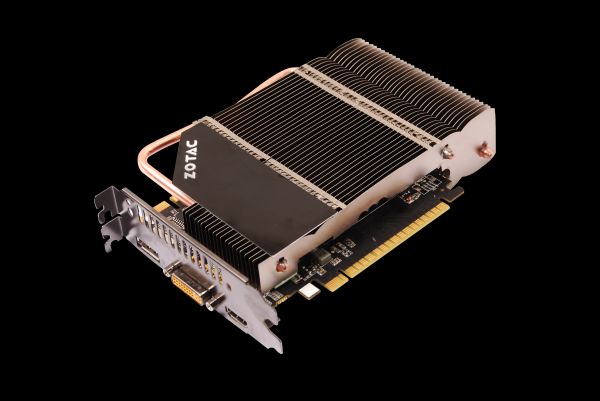

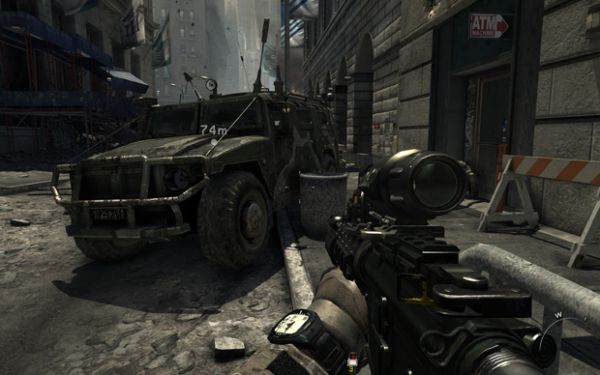
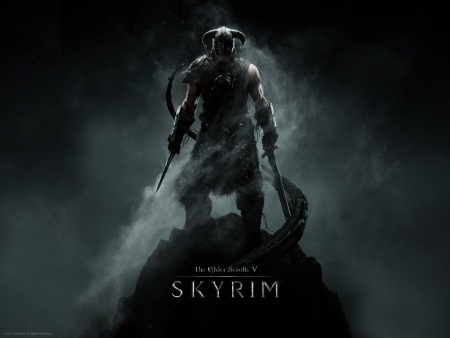
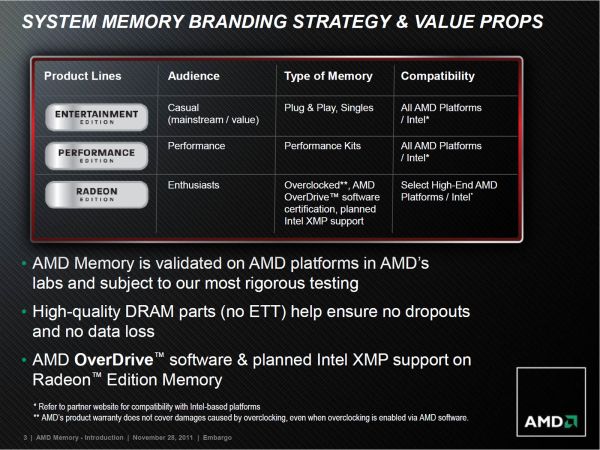
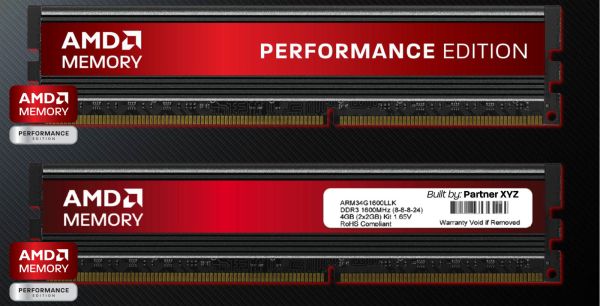
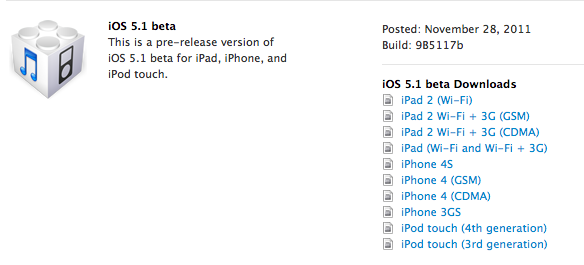
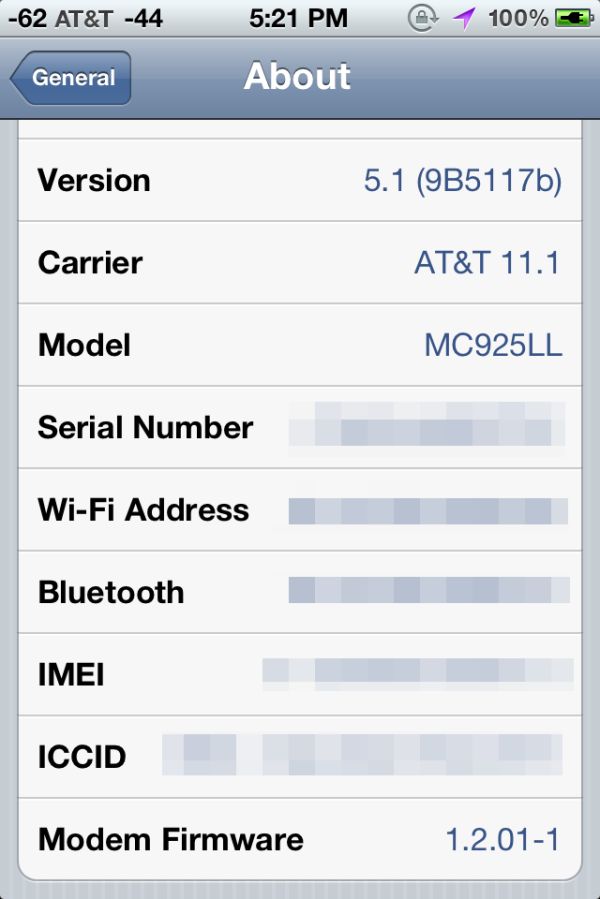


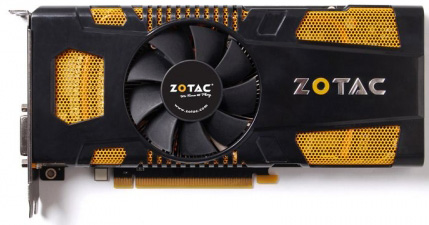
















Bookmarks